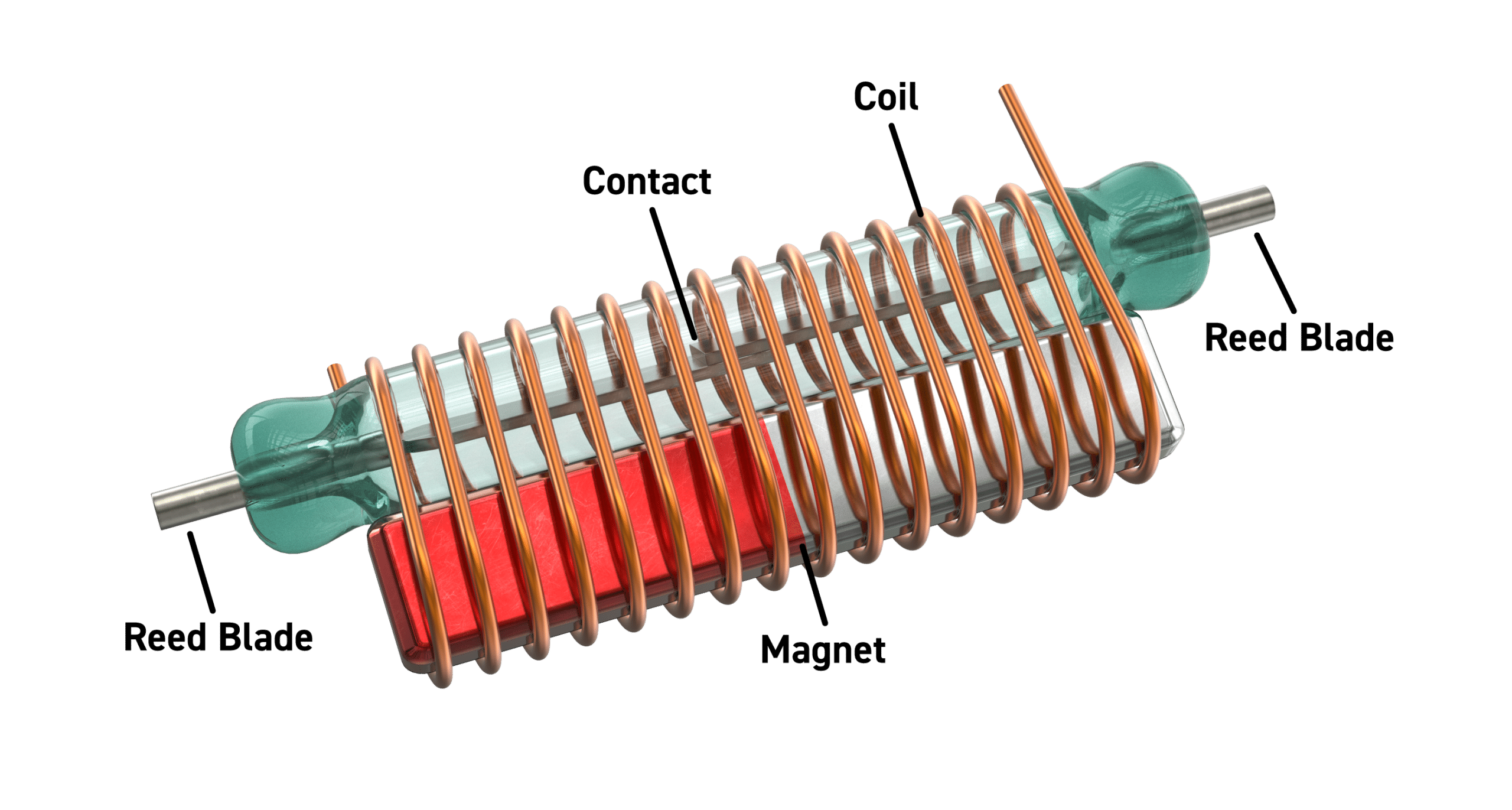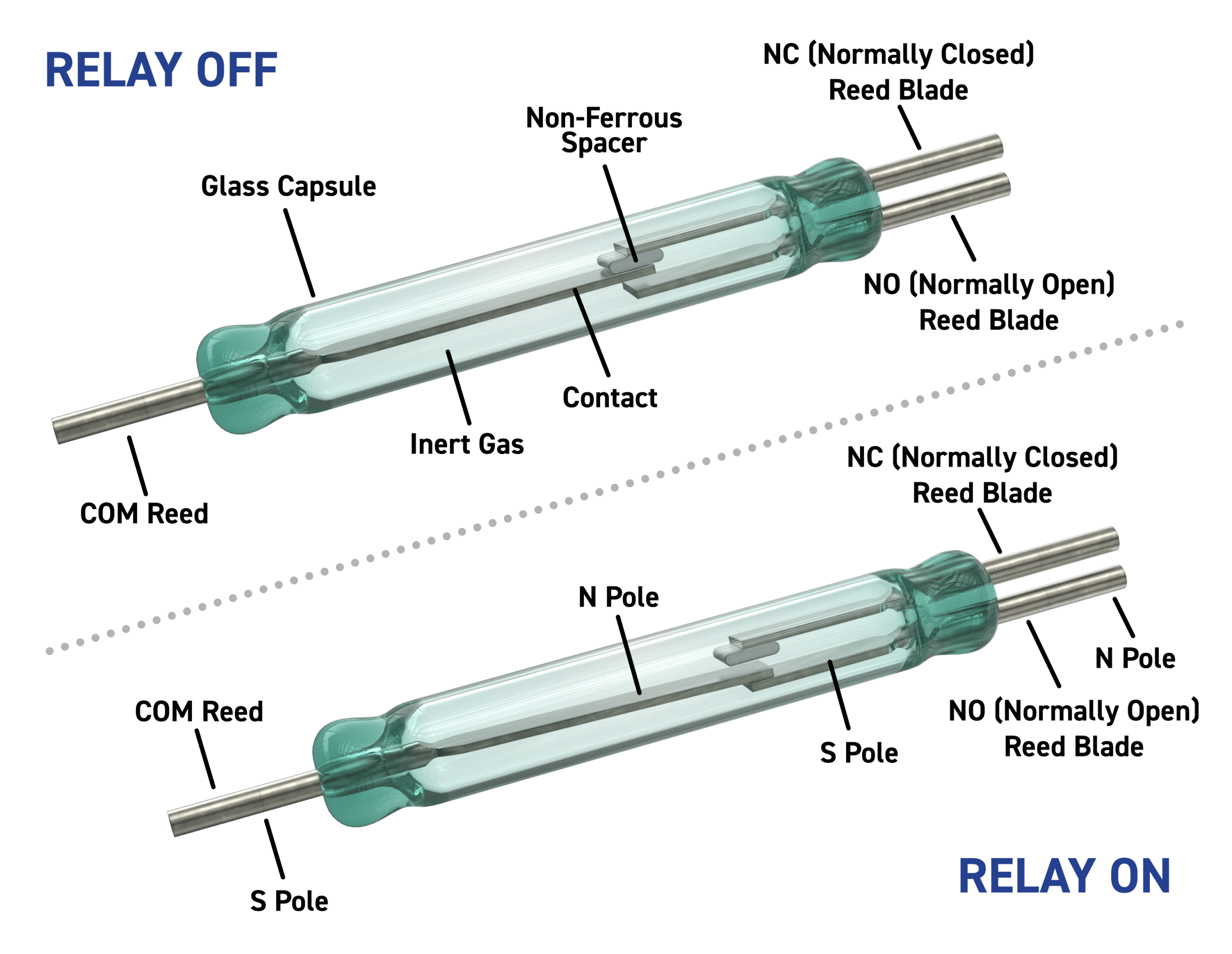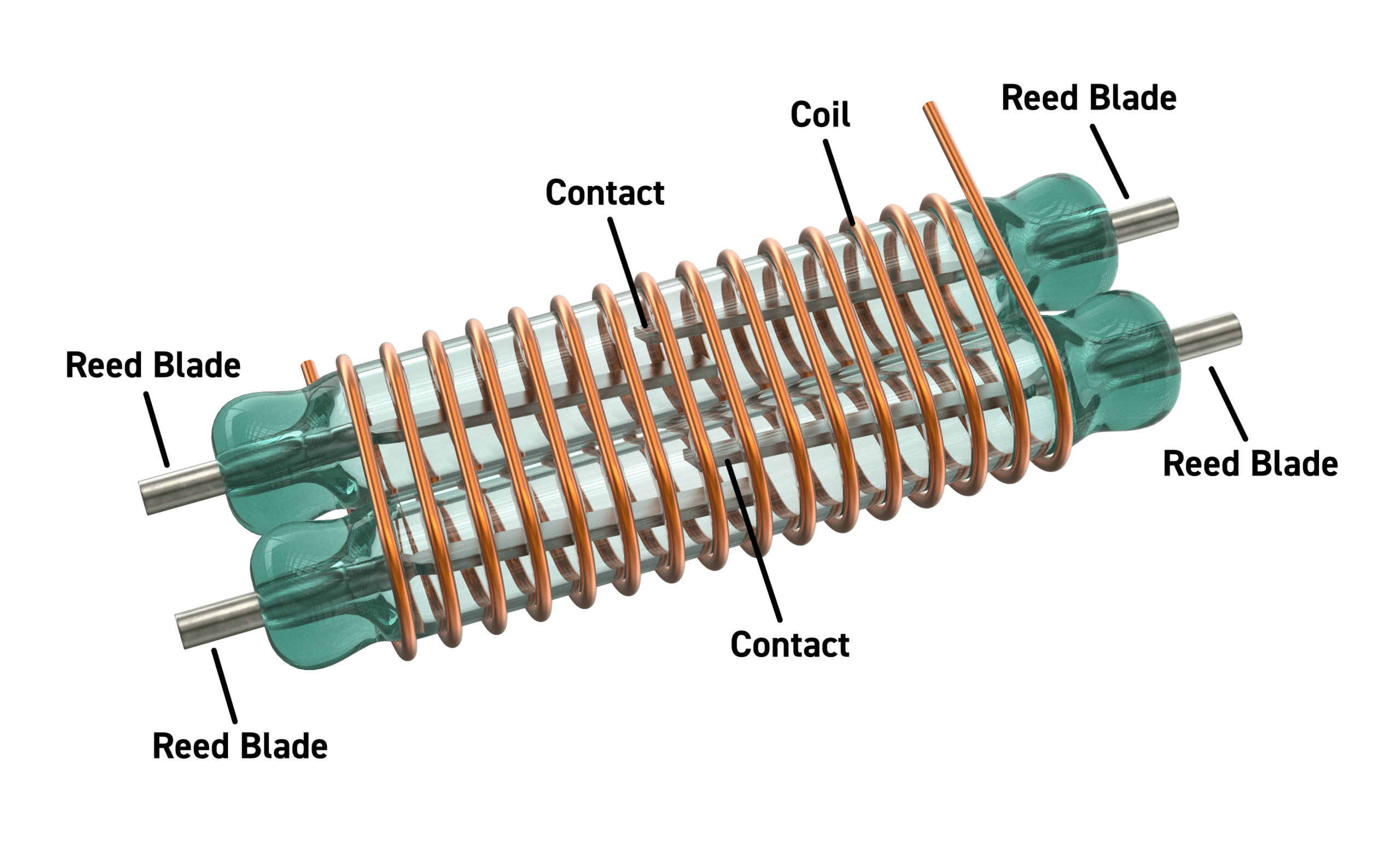An introduction to Reed Relay basics (Part 2):
This is the second section of an Introduction to Reed Relay Basics. For a simple explanation of what a reed switch is and generating the magnetic field please read ‘Reed Relay Basics Part 1‘
Normally open reed relays are by far the most common configuration of reed relay. However, normally closed relays can also be supplied where the blade is biased so it is normally closed and the application of a magnetic field opens the relay contacts.
The contact bias is created by adding an internal permanent magnet to hold the reed switch in a normally closed state. When the relay coil is energised it cancels out the magnetic field bias and the contacts open. If the coil voltage is increased substantially beyond its nominal voltage (typically greater than 1.5 times nominal) there is a risk that the contact will reclose.

Not surprisingly normally closed relays are more difficult to manufacture and have higher magnetic interaction due to the bias magnet.
Changeover Reeds Explained:

Reed relays can be supplied with changeover switches – the reed switch has normally closed contact (when no magnetic field is applied) and normally open contact (which closes when the field is applied). The reed switch closed contact uses the blade as a spring bias with a non ferrous spacer to avoid completing a magnetic circuit. The coil field moves the blade to the normally open contact blade which does not have this spacer. As the reed relay switch blades transition between the two states for a brief period neither contact is closed – and important consideration in some applications.
The normally closed position relies on contact pressure being created by the spring bias of the blade. As well as being much harder to manufacture than normally open reed relays the two contacts, normally closed and normally open, can have quite different characteristics and stability. Experience is generally that they have a slightly less stable contact resistance than their simpler normally open counterparts. Even so, they perform a useful function for many applications because unlike the use of two normally open reed relays used to create a changeover function they only need one coil drive and it is mechanically not possible to have both contacts closed at the same time.
If you are interested in reed relays with changeover reeds please check out our Series 107 range. There are a couple options available including 1 Form C and 2 Form C, both 3 watts at 200v.
Two Pole Relays Explained:
Reed relays can also be supplied as 2 pole relays where two reed switches are contained in the same package and operated by a common coil drive.
It is important to remember that these relays do not have an interlock mechanism between the two, it is unsafe to assume that the two poles operate at exactly the same time and the two reed switches are essentially independent. There could be an operate time difference of between 50-250 microSeconds between them. Failure in one (say a contact weld) will not stop the other contact from moving.







